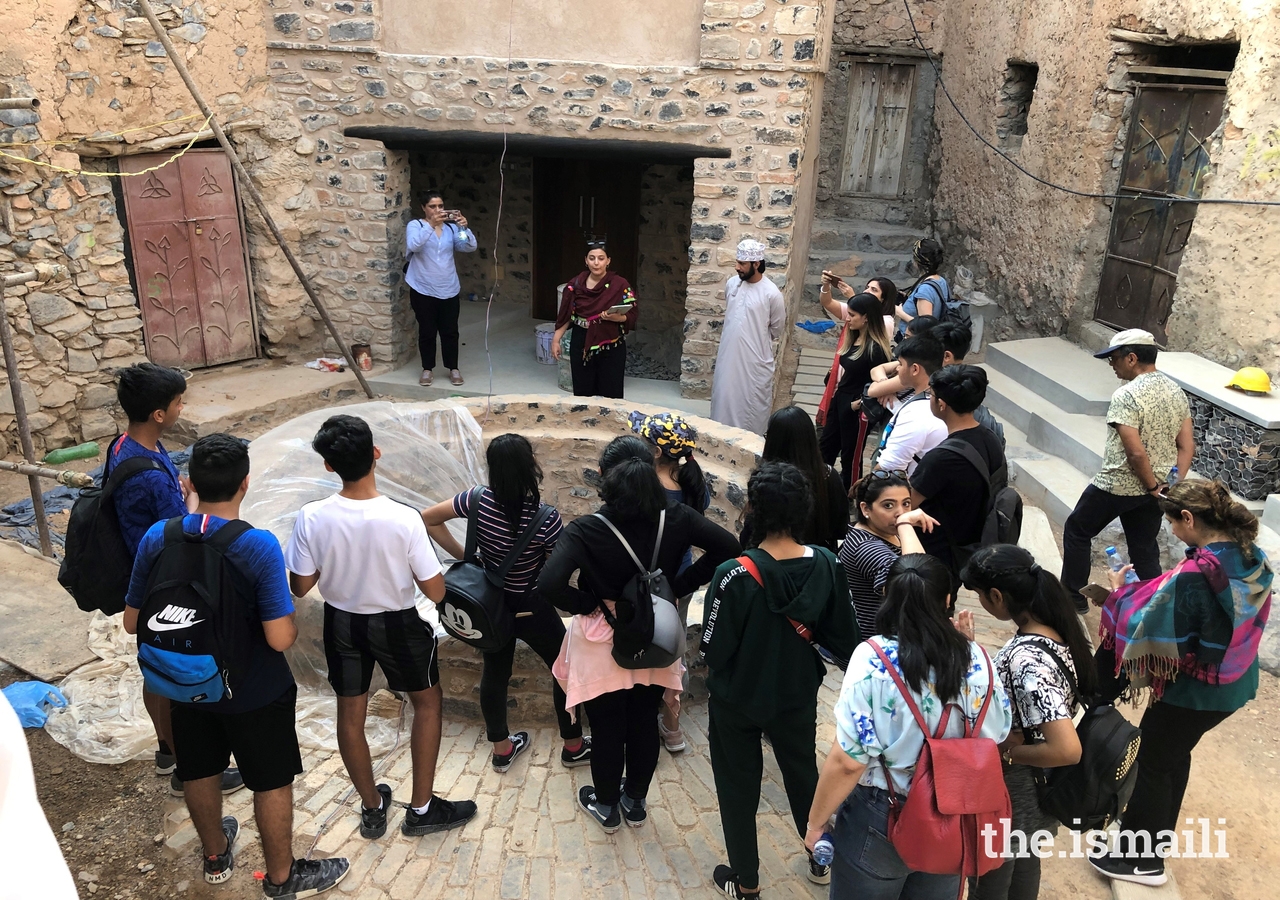This four-day cultural experience provided several hands-on learning opportunities, demonstrating how education extends beyond the classroom. The experience broadened and challenged participants in their understanding of quality of life as defined by the Aga Khan Development Network (AKDN), including analysing the interrelationships between various areas of development with a special focus on the Aga Khan Trust for Culture (AKTC).
To enhance the understanding of development areas, Professor Raj Isar, AKTC’s Education Director, also joined the youth during the excursion. He expanded upon forms of culture including art, architecture, heritage, ways of life, civilization, and identity formation. He spoke about notions of culture that are tangible like buildings and artefacts and those that are intangible like oral traditions and social practices. Professor Isar also examined — through various case studies like the Nizammudin Basti in Delhi — the significance of the built environment and the importance that restoration and preservation has on cultural heritage.
One example of cultural and economic preservation was witnessed while visiting the Muttrah Fish Market, nominated for an Aga Khan Award for Architecture during the 2017 - 2019 cycle. The market is a multifunctional space which has enhanced the sustainability, vibrancy, and economy of its people, while continuing the region’s trade and fishing traditions. Its architecture blends old with new, while still respecting its own traditional context, with its structure and technology purposefully serving the function of natural ventilation.
“Architecture serves as a window into understanding the different beliefs and cultural values of a community or a society… AKDN and its agencies are constantly working towards the development and enrichment of certain communities to build a bridge between the cultural, social, and economic aspects in that society to improve the quality of lives of the people living there,” said one participant.
Architects Matina Vrettou and Dr Konstantina Georgiadou, from the Centre for the Study of Architecture and Cultural Heritage of India, Arabia and the Maghreb (ArCHIAM), joined participants onsite, taking youth on an experiential tour through the settlements of Harat al-Bilad and Misfat Al-Abriyeen to witness first-hand the restoration and preservation work, including restoring houses and mosques.
Misfat Al-Abriyeen has a 300-year history of human settlement and agriculture and is best-known for its incredible mud architecture throughout its village. A natural irrigation system ensures water supply, thus preserving the natural beauty of the environment and nourishing the lush plantations of trees, fruit, open gardens, and terraces.
Participants witnessed how the revitalisation of the settlement sought to preserve the cultural heritage and traditions of the village while at the same time advancing economic and social revitalisation through the restoration project, including the addition of guest houses for tourists. One young participant highlighted: “My favourite site visit was Misfat Al-Abriyeen. The restoration work done by ArCHIAM and the government that took place there through using local materials and conserving the old community of Misfat was fascinating.”
The youth concluded the excursion feeling recharged and inspired, with the wish to continue the strong partnership that was fostered with AKTC and ArCHIAM. They are looking forward to future excursions to further explore the work of the AKTC in projects located in other parts of the world.
One of them explained, “I feel like we are the next generation and the leaders of the future. It is our responsibility to learn and contribute to society. This will help in keeping our culture alive and remembered.”










